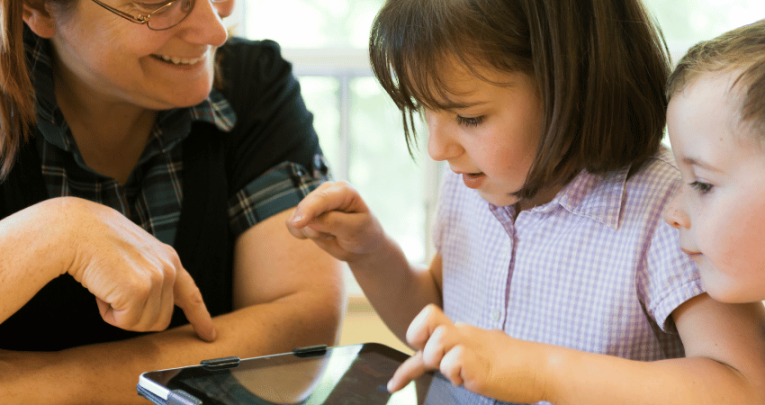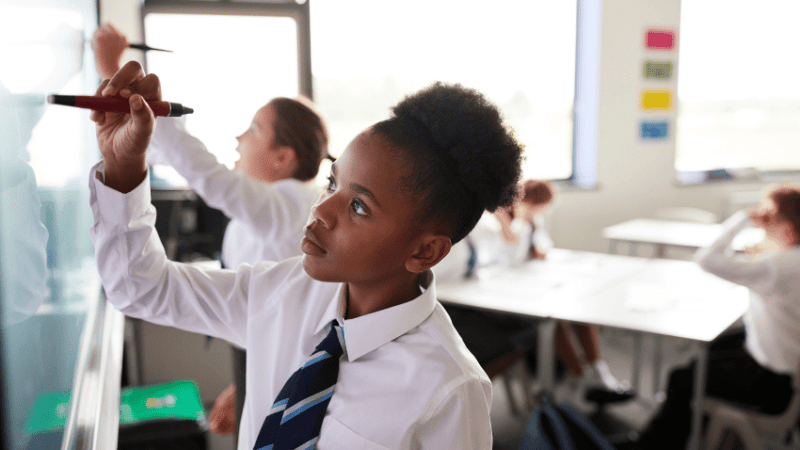Digital and technology standards – What they mean for schools

What are the new digital and technology requirements, and what do they mean for primary schools and teachers?

- by Mel Parker
- Educational technologist at RM Technology and former deputy head

In March 2025, the government updated its digital and technology standards. Its aim is to ensure that every school has the right foundations to deliver a smooth, safe, and effective learning experience for pupils.
If you’re wondering what these new standards mean for your role, your pupils, and your day-to-day teaching, here’s a clear, practical look.
What are the new digital and technology standards?
The updated digital and technology standards cover the digital essentials that every school should get right. They’re about more than just gadgets or wifi speed – they include:
- reliable broadband and wifi in all classrooms and shared areas
- cybersecurity and keeping pupils safe online
- digital accessibility – ensuring all pupils can benefit, including those with additional needs
- cloud-based tools that support teaching and school management
- strong leadership to oversee the school’s digital strategy
These aren’t just rules to tick off, either. Think of them as a guide to help you build a digital setup that truly supports teaching, learning, and school life.
What do the digital and technology standards mean for schools?
Too many primary schools still face foundational digital challenges. Only 63 per cent report a fully functional wifi signal across classrooms and shared spaces.
This is a basic requirement. When missing, it disrupts lesson flow and limits access to essential digital learning tools such as phonics apps and interactive storybooks.
We know that in primary education, digital tools can make a huge difference. This is whether it’s helping pupils with special educational needs or supporting those learning English as an additional language.
But these benefits only materialise if the technology works. The updated standards are designed to help close those early-stage digital gaps, ensuring every pupil starts their learning journey with the tools and support they need to thrive.
What will change?
A key change encouraged by the new digital and technology standards is that schools appoint a senior leader responsible for digital strategy.
In primary schools, this doesn’t mean adding yet another specialist role, but having a leader who understands the unique tech needs of younger pupils, teaching assistants, and parents.
This kind of leadership helps bring better coordination for teacher training, device upgrades, and digital safety policies – all tailored to primary classrooms.
That said, I’ve seen firsthand just how challenging it can be in smaller primaries to find a digital lead. It’s not always clear who should take that role, or even where to turn for guidance.
As such, for these schools, the standards are just the start; what comes next is reaching out to dedicated IT experts in education, who can offer support with strategic planning, procurement, and leadership training.
Without that external input, the standards risk becoming an aspiration rather than an achievable roadmap.
Do I need new iPads?
Many primary schools still rely on ‘Bring Your Own Device’ (BYOD) policies or limited shared tablets – but these can create real barriers for younger pupils, especially those who don’t have access to suitable devices at home.
The updated standards shift the focus towards more sustainable models, like bulk-buying or leasing, ensuring every pupil has consistent access in the classroom.
This removes a key barrier to participation and gives teachers the confidence to plan high-quality digital learning for all. For example, at Sunnyvale Primary, leasing tablets means every Year 3 pupil has their own device for class projects, removing barriers caused by device shortages and enabling more interactive learning.
But it’s not just about devices. Digital skills matter too – for pupils, staff, and families. Nearly 40 per cent of families lack basic digital skills (via The Guardian, 2024), which can affect how well pupils benefit from technology at home.
The standards encourage schools to provide digital skills workshops and resources for parents and caregivers. This is a critical support in primary education, where home learning and parental involvement are key.
Practical steps to take
You might be wondering what all this means for your daily teaching. While some changes will take time, and the involvement of multiple staff members, there are some independent steps you can take to move things along.
For example, we’ve recently been recommending digital tools like Microsoft PowerPoint’s ‘Present Live’ feature, which shows subtitles in different languages on parents’ phones during meetings and can improve communication and inclusion. This is especially the case in diverse primary school communities. A digital lead could help bring these kinds of helpful tools into your school.
Don’t worry about perfect
Remember, the standards are a guide for schools to work towards, not a checklist to panic over. Primary schools are at different stages; many won’t meet every part of the standards immediately.
What matters most is having a clear plan, making steady progress, and ensuring technology supports teaching and learning effectively in your classroom.
That way, you can focus on inspiring and educating your pupils, while technology quietly supports you behind the scenes.
Digital and technology standards: the facts
- Less than 60 per cent of UK primary schools have full wifi coverage across the building — many classrooms still have poor connections.
- The Connect the Classroom programme provides government funding to help schools upgrade digital infrastructure.
- Schools are encouraged to appoint a senior leader responsible for digital strategy to help coordinate training and technology use.
- Leasing devices in bulk can reduce costs and ensure all pupils have the same access, closing digital divides.
- Almost 40 per cent of families have low digital skills.
- For more info and guidance, visit the Department for Education’s Digital and Technology Standards page.
Mel Parker is an educational technologist at RM Technology and former deputy headteacher.










